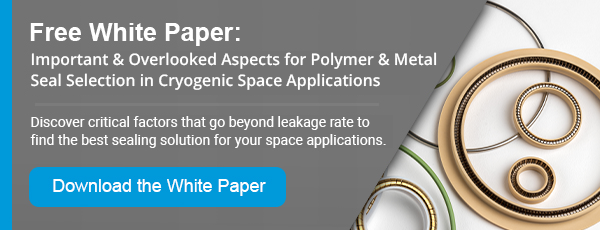Progress, innovation, growth, industrialization—just a few of the benefits that have kept companies focused on the race to space. The global market for space exploration was $383.5 billion U.S. worldwide in 2017 according to The Space Foundation, with a 100 percent increase in the total number of spacecraft deployed. By 2040, it is expected to grow to $1.1 trillion U.S. says Morgan Stanley, with many looking towards moon exploration because of its strategic location, critical minerals and water supply. Space has become one of the most lucrative industries globally per Research and Markets “Global Space Industry Market and Technology Forecast to 2026."
In the past, space technology was limited to a few countries; however, the space world is rapidly changing with not only more countries such as India, Japan and Israel joining the crowd but also private companies keeping the field competitive. On the European end, investment in space is fairly recent with the European Commission [EC] and member states creating the European Space Policy on May 22, 2007, unifying the approach of The European Space Agency [ESA]. A 2017 report for the House of Commons Committee estimates the UK space sector has tripled in size since 2000, with £13.7 billion spent in 2014/15 and the UK capturing between 6.3 and 7.7 percent of the global market.
Other advances in Europe include the establishment of the European Space Policy, development of Galileo (the first civilian-run satellite navigation system, with an estimated $5.23 billion EUR cost and expected to be fully operational by 2020), and the ambitious Copernicus Earth Observation system (with an estimated $2.4 billion EUR price tag also expected to be operational in 2010 to ensure access to geo-spatial images for climate change, urban planning, health, and other decision-making). In the summer of 2020, Europe’s ExoMars rover is planned to launch, and then land on the planet in 2021 to study it and the soil for signs of life, and, eventually, mine regolith ore for water and oxygen.
As the space world opens up more, so does the need for technology that helps with efficiency, cost and sustainability – technology such as seals. You may be aware of Saint-Gobain Seals providing critical parts for NASA space exploration programs since the late 1950s, but the business also works with a number of other countries in Asia and Europe today and with different challenging applications. Their high-performance plastic seals and high-temperature polymer materials are used in propulsion and payload systems, ground support equipment, and structures and fuel tanks in rockets, actuators, regulators, turbo pumps, engines, and more.
What is Trending in Europe for Space?
As a provider to this market, Saint-Gobain Seals has noticed a number of trends in the European space exploration market, including:
- Competition is on the rise: While there are many players (public and private) in the U.S., fewer private companies are dedicated to space exploration in Europe. Currently, a major player is ArianeGroup, a joint venture of the European aerospace company Airbus and Safran in France. The European Commission has also announced early this year that it intends to launch programs with the ESA, as well as establish a space fund of up to $300 million EUR to encourage space startups in Europe.
- Price is becoming more of a factor: Expense has become more of a driver with increased competition in the U.S.; this is also starting to happen in Europe. Where formerly, big launch vehicles like Ariane 5 and now Ariane 6 were solely used in the past, now smaller, more cost-effective, downsized versions such as Vega are making quick launches with smaller payloads possible. Additionally, demand for smaller “nanosatellites” (requiring less thrust and, therefore, less expensive), is expected to account for the biggest increase in global spending in space in coming years, and re-usable launch vehicles, the second most, in countries like the U.S., China, Russia and the European Union.
- Recycling is increasing: Europe is starting to be more focused on sustainability. Currently Saint-Gobain Seals is working on a project to reuse seals on feeding lines to tanks that needed to be changed at every launch and are now being reused for several.
- Cooperation is becoming stronger: With space exploration an expensive prospect, Europe, like other countries, is looking to collaborate. It is involved with the International Space Exploration Forum (ISEF) and is participating in international discussions. The ESA is working with NASA to define a concept for a sample return mission with ExoMars. It is also working with NASA on a service module on the Orion space craft, and with Russia to develop technology for the future.
What Seals are Used in Space?
Spring-energized seals such as Saint-Gobain Seals’ OmniSeal® RACO® polymer seals are commonly used in space applications, especially those with extreme environments such as cryogenic. Comprised of a Fluoroloy® jacket energized by a corrosion resistant, heavy duty/high load spring, the seal offers a high spring force on the lip, are lightweight, can operate with little to no maintenance, and can address extreme temperatures (20K to 423K [-253°C to +150°C]) and pressures (UHV to 100 MPa).
Examples of recent applications that Saint-Gobain Seals has been involved with in Europe include:
- Mars exploration, and in particular, sealing for a container to gather samples from Mars in which an extremely tight fit was needed to hold contents from the planet while preventing other particles from getting in.
- Non-standard applications, with development of large seals (beyond three meters) in connection with R&D programs at ESA.
- Bearings and other parts for exploration and heavy-lift launch vehicles.
- Valves on fuel system and feeding lines used to initiate launches as well as close off systems for launch vehicles.
What Should You Consider for Seals in Space?
Regardless of the country in which they are being used, seals in space must address aggressive requirements, including:
- Cryogenic temperatures and temperature cycling – and resulting expansion and contraction of parts (with hardware and surfaces sometimes shrinking at different rates), effect on lubrication, etc.
- Aggressive chemicals – with frequent exposure to liquid oxygen and liquid hydrogen (the latter of which must be below 20K [-253°C] to go to a liquid state).
- Increasing pressure – causing metal and other hardware to open, potentially impacting the seal.
- Extreme cleanliness – with liquid oxygen able to easily and quickly ignite when exposed to dirt or other particles, in advance of its introduction to liquid hydrogen in the combustion chamber.
Do You Go with Plastic or Metal Seals?
Finding the best option when it comes to seals to address the above rigorous requirements is not an easy task. Spring energized seals have a plastic jacket with a spring inside to keep them energized and overcome shrinkage in very low temperatures. In other circumstances, metal might provide a certain tightness. Several factors should be considered:
- Is it a static application? For sealing at cryogenic temperatures in static applications, such as with two stationary flanges, metal is a very traditional and safe approach in terms of minimal leakage. But it’s not all about leakage and you must go beyond to consider other important factors. While meeting leakage requirements, the higher load of metal seals impacts installation easiness and need of stronger and heavier bolts and flanges to keep the system under required pressure. Also, metal seals are not flexible, meaning if the system sees deflections (and it can be the case on a rocket), compression on the seal is released and tightness compromised.
- Is it a dynamic application? In dynamic applications, spring-energized seals can offer lower load and often provide a better lifetime compared to metal sealing solutions.
- Does it also involve exposure to cryogenic temperatures? For situations that require sealing at cryogenic temperatures in dynamic applications, metal seals are generally not a good alternative. With a thin coating (few microbes of a millimeter), metal seals are at risk of damage and leakage when stretched in these applications. Spring-energized seals, conversely, can offer good sealing capabilities.
- Is it prone to scratches? In applications that are prone to friction and scratches, metal’s very thin coating may make them less ideal than spring-energized seals.
- Is it prone to vibration? Vibrations during launch and force of the thrust can shake the rocket and components inside. This level of vibration is often hard for manufacturers to estimate, so it is best to be on the safe side with a flexible design. Spring-energized seals offer greater flexibility over metal.
- Does it require deviations in movement? For applications requiring hardware deviations (such as opening and closing during operation), metal is not a good option. Instead, spring-energized seals can offer a more flexible design with higher spring back.
Reliability, continuous and rapid innovation, and proven designs—these are other important considerations when looking for materials in space applications as well as a good partner to help design, engineer and test. Saint-Gobain Seals has been NASA’s partner for over five decades and continues today working with numerous other countries and private space companies to support the expanding space world.
With recent, increased investment in R&D in test rigs, launching internal testing procedures and projects, the business is doing its own exploration to gain even more knowledge on how critical seals react at lower temperatures, and sharing combined knowledge between global sites. They work directly with OEMs and private companies to determine which seal designs and custom-developed materials are best for their challenging applications.
Investments in finite element analysis, with a complete R&D team focusing on developing and validating proprietary material models, also help to ensure the highest levels of accuracy to validate complex designs and achieve the highest quality of parts for more reliable performance. In addition to finite element analysis, they are focusing on evaluating performances of seal design in different conditions such as sealing load at cryogenic temperatures, influence of misalignment or eccentricity and influence of low or high pressures. This helps in pre-validation process, giving the business and their partners high confidence in the seal designs.
Interested in examining plastic seals and metal seals further? Download our new white paper today: Sealing Solutions in Critical Cryogenic Space Applications: Going Beyond Leakage Rate. You can also contact our experts!


